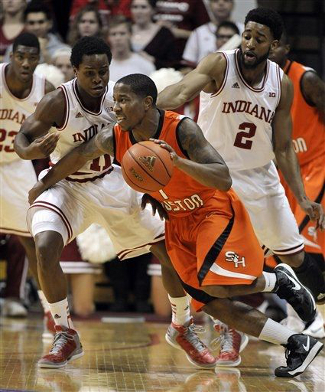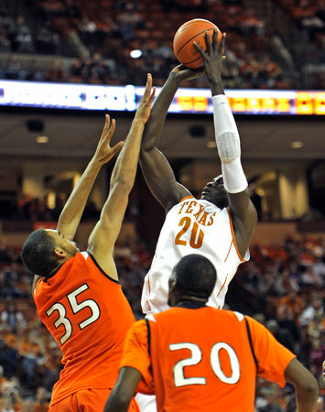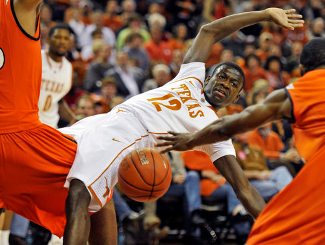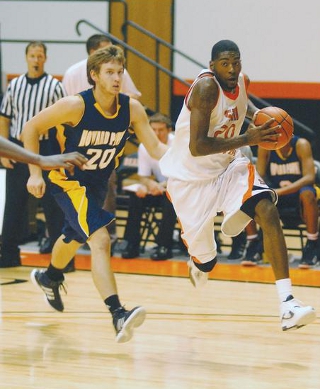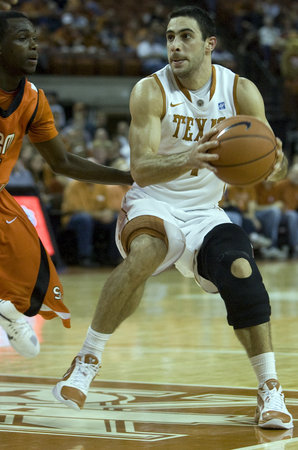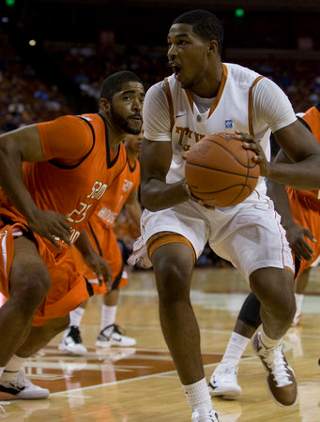Texas Longhorns 65, Sam Houston State Bearkats 37
After a harrowing week of basketball on the island of Maui, the Texas Longhorns returned to mainland action on Tuesday night, hoping for a quick recovery against Sam Houston State. Led by a stifling defensive performance, the Longhorns overcame 19 turnovers and long field goal droughts to cruise to a 28-point win.
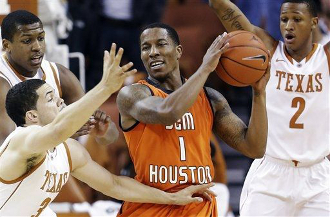
Sam Houston State was suffocated by the Texas defense
(Photo credit: Eric Gay/Associated Press) 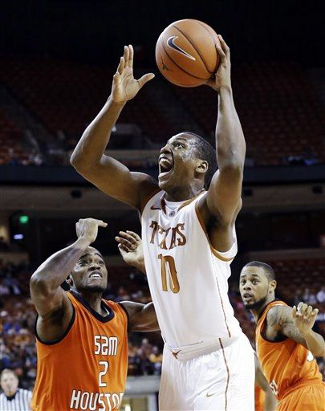
Jonathan Holmes found some success inside
(Photo credit: Eric Gay/Associated Press) |










